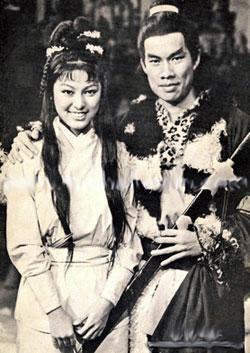
Yuen Long District is one of the districts of Hong Kong. Located in the northwest of the New Territories, it had a population of 662,000 in 2021

Sheung Shui is an area in the New Territories, Hong Kong. Sheung Shui Town, a part of this area, is part of the Fanling–Sheung Shui New Town in the North District of Hong Kong. Fanling Town is to its southeast.
Castle Peak Road is the longest road in Hong Kong. Completed in 1920, it runs in the approximate shape of an arc of a semi-circle. It runs West from Tai Po Road in Sham Shui Po, New Kowloon, to Tuen Mun, then north to Yuen Long then east to Sheung Shui, in the very north of the New Territories. It is divided into 22 sections. It serves south, west and north New Territories, being one of the most distant roads in early Hong Kong.

Tai Po is an area in the New Territories of Hong Kong. It refers to the vicinity of the traditional market towns in the area presently known as Tai Po Old Market or Tai Po Kau Hui (大埔舊墟) on the north of Lam Tsuen River and the Tai Po Hui on Fu Shin Street on the south of the Lam Tsuen River, near the old Tai Po Market railway station of the Kowloon-Canton Railway. Both market towns became part of the Tai Po New Town in the late 1970s and early 1980s. In present-day usage, "Tai Po" may refer to the area around the original market towns, the Tai Po New Town, or the entire Tai Po District.
Tai Po Road is the second longest road in Hong Kong. It spans from Sham Shui Po in Kowloon to Tai Po in the New Territories of Hong Kong. Initially, the road was named Frontier Road.

Yuen Long Town is located in the district centre of Yuen Long District, New Territories, Hong Kong. It is the heart of Yuen Long and Yuen Long New Town, with a population of around 200,000.

Shap Pat Heung is an area in the New Territories of Hong Kong. Located south of Yuen Long and northeast of Tai Tong, the area occupies the plain north of hills of Tai Lam. The Cantonese name 'Shap Pat Heung' means 'eighteen villages' at its beginning. It was later expanded to thirty villages. Administratively, it is part of the Yuen Long District.

Tai Po Kau is an area and a village south of the town of Tai Po in Hong Kong, which was the site of the former Tai Po Kau station on the Kowloon–Canton Railway. It is located at a river estuary that empties into Tolo Harbour.
Articles related to Hong Kong include:
There are three plains in Hong Kong, in the northern New Territories. These plains are Yuen Long, Fanling, and Tai Po.

Yuen Long Kau Hui is an area in Yuen Long, Yuen Long District, in the western New Territories of Hong Kong.

The Legend of the Condor Heroes is a Hong Kong television series adapted from Louis Cha's novel of the same title. The series was first broadcast on CTV in Hong Kong in 1976.

The Hong Kong government started developing new towns in the 1950s to accommodate Hong Kong's booming population. During the first phase of development, the newly developed towns were called "satellite towns", a concept borrowed from the United Kingdom, of which Hong Kong was a colony. Kwun Tong, located in eastern Kowloon, and Tsuen Wan, located in the south-west of the New Territories, were designated as the first satellite towns, when the urban area in Hong Kong was still relatively small, restricted to the central and western parts of Kowloon Peninsula and the northern side of Hong Kong Island. Wah Fu Estate was also built in a remote corner on the southern side of Hong Kong Island, with similar concepts but at a smaller scale.
Tin Sam Tsuen or Tin Sam Village, sometimes transliterated as Tin Sum Tsuen, is the name of several villages in Hong Kong:

Hung Shui Hang Reservoir is a reservoir located to the north of Kau Keng Shan, Tuen Mun, New Territories, Hong Kong. It is located at the northwestern edge of Tai Lam Country Park and less than one kilometre away from Lam Tei Reservoir. Like Lam Tei Reservoir, it is part of Tai Lam Chung Reservoir's further water supply plan and an irrigation reservoir. The reservoir is divided into two reservoirs. The water from the reservoir flows through Tan Kwai Tsuen and Chung Uk Tsuen and then through Hung Shui Kiu, passing through the west side of Tin Shui Wai and finally empties into the Deep Bay.










